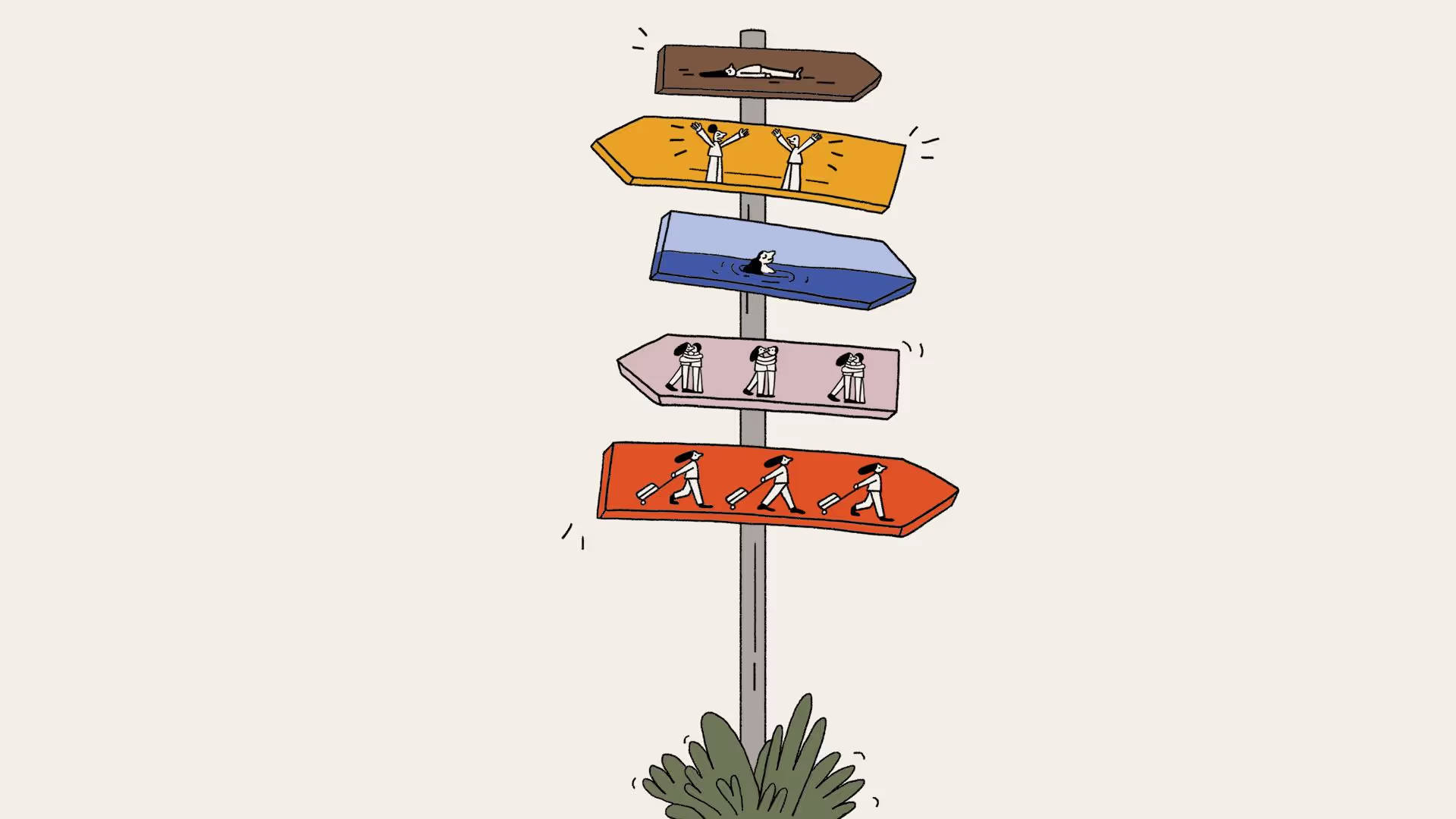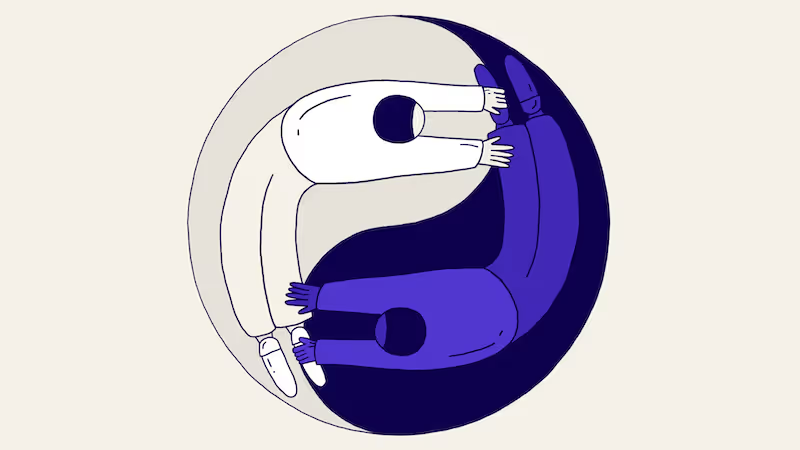Shall We Begin?
When I was twenty-three, I was in a relationship that was too bad to stay and too good to leave. We were constantly breaking up and patching up. Anyone who has been in this kind of on and off relationship knows: when it's good, it’s great. And when it’s bad, it’s horrible. Relational Ambivalence—those contradictory thoughts and feelings of love and hate, attraction and disgust, excitement and fear—makes us constantly wonder: should I stay or should I go? The resulting whiplash is exhausting, not only for the people in the relationship but the people around it.
These relationships have a rhythm: we work ourselves into a fit, decide enough is enough, and finally break up. But, eventually, as we feel calmer and less smothered, our core vulnerabilities get momentarily relieved. And that little voice starts popping up: should we meet? Talk it out? Remember how great it was…when it was good? Maybe they reach out. Maybe we do. We meet at a café or better yet, a bar, in which a drink may help the walls come down.
And suddenly, we are so wonderful at talking to each other. None of our buttons are being pushed. At least, not in a bad way. It’s flirty. We’re connecting, longing. We were silly to throw this away, weren’t we? We’ve invested so much. And there’s so much potential here. Inch by inch, look by look, we work our way back…only to blow it all up again a week later. Back then, my boyfriend and I decided the way to get out of this cycle was to go to couples therapy. We lasted one session. The therapist told us we were done. We called it quits but, a few days later, I telephoned her: how could you do this? You don’t know what we have!
I’ll never forget what she told me. Her position was that, when you work with couples frozen in ambivalence, taking a stance for them can break the cycle. If they agree with you, they’ll experience relief in the permission they couldn’t give themselves. If they disagree, they’ll align against you instead of each other. Had she not taken a stance, she explained, she would be entering our dance with us—exploring the good one week and the bad the next, perpetuating the roller coaster. She didn’t want to be, what we call in therapy, “the homeostatic maintainer.” Looking back, I know she did us a favor. That said, after practicing therapy myself for decades now, I can say that taking a stance is rarely that simple.
Part of why experiencing Relational Ambivalence is so challenging is because it’s often a core feature of our most important relationships. How many of us hold contradictory feelings toward our own parents? Toward the sibling who never paid us back? Toward the dear, old friend who only ever talks about themself? Toward our job? Toward the place we live? Of course there are situations in which we need to definitively decide to stay or go. But there are just as many, if not more, situations in which our ability to hold our ambivalence is a sign that we understand and accept the complexities of life.
As we grow, the challenge becomes—how do we know when to resolve the tension and when to hold the contradictions? It takes practice and patience. Dr. Alexandra Solomon, author of Loving Bravely, has said that “patience is also a form of action. It’s not purely passivity. It’s not a resignation.” Relational ambivalence is a fact of life. It will be in every relationship we have. This month, we’ll be exploring when it’s time to get off the ride and what it means when we want to hold on.
Let’s Turn the Lens on You
- Where has Relational Ambivalence shown up in your life? With family? With friends? With partners?
- What does it feel like? What is the language of it?
- In which situations did you feel you needed to make a resolution? Why?
- In which situations did you feel the resolution was to not make a definitive decision in either direction?
More From Esther
“Twice Married. To Each Other.” / a new episode of “Where Should We Begin?”
The second half of season 5 has launched! In this new episode of Esther’s podcast “Where Should We Begin?,” we meet a couple who has married, divorced, and remarried—each other. With four kids between them, tensions run high. They fight about everything: the chores, the cats, who gets to tell who what to do. They come into the session with one story and Esther helps them write an alternate version.
“Our Comfort with Intimacy Has A Lot to do with These 7 Verbs” / a recent blog article
It’s been said that we need fifty words in a foreign language in order to speak it. In the language of intimacy, basic fluency comes down to just seven verbs.
“New relationships are a part of life. So is ending them.” / a newsletter
We date exponentially more people than we marry, so it’s fair to assume that every seriously-partnered person out there is carrying around a few half-started situationships, lost loves, and heartbreaks.
Conversation Starters
A compendium of highly recommended sources of inspiration and information
I’m Reading:
- “Make No Small Plans: Lessons on Thinking Big, Chasing Dreams, and Building Community,” a new book by Elliott Bisnow, Brett Leve, Jeff Rosenthal, and Jeremy Schwartz, co-founders of Summit
- “Loving Bravely,” by Dr. Alexandra Solomon
- “The Erotic Mind: Unlocking the Inner Sources of Passion and Fulfillment” by Jack Morin
- “Alias Grace” by Margaret Atwood
- “La llave del abismo” by José Carlos Somoza
I’m Experiencing:
- I invite you to join me and the poet David Whyte for our virtual conversation “Intimacy and Independence: The Paradox of Love,” on April 24, 11 am PT. Register here.
- We will discuss: how do I stay connected to an inner sense of self without losing you? How do I stay connected to you without losing me? The holding together of that duality is one of the great paradoxes of love. To find that place inside us where we feel as if we are living a life we can call our own while enjoying the joy of close relationships may be one of the central triumphs of a human life. I hope you will join us.
Resources for Ukraine:






.svg)





